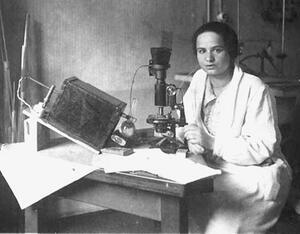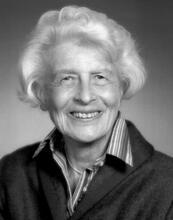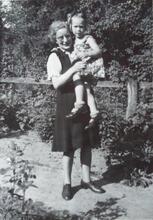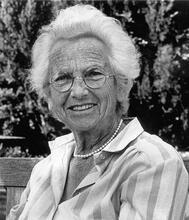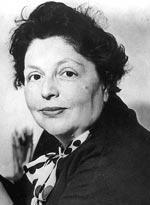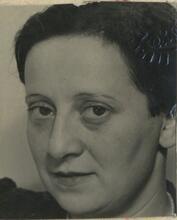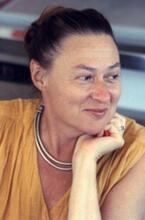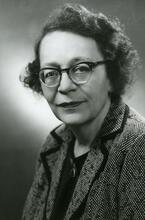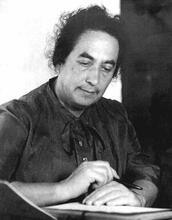Marietta Blau
Marietta Blau joined the Institut für Radiumforschung in 1923, developing an emulsion technique for recording the tracks of particles that allowed her to detect neutrons and observe nuclear disintegration caused by cosmic rays. Forced to emigrate in 1938, she worked in Mexico until she joined the US Atomic Energy Commission in 1944, later teaching at the University of Miami. Throughout her career, she faced discrimination for her religion and gender and was denied paid work. Twice nominated for the Nobel Prize, Blau never won, and in 1950, Cecil Powel won the prize for work largely based on Blau’s, without crediting her. Blau’s eyesight deteriorated in the 1960s because of exposure to radioactivity, and she died in Vienna.
Introduction
“I am taking the liberty of drawing your attention to a case close to my heart. Since three years my colleague, the physicist Dr. Marietta Blau, lives in Mexico City…I know Miss Blau as a very capable experimental physicist who could render valuable service to your country. She is an experimental investigator in the field of radio-activity and cosmic rays.” This is what Albert Einstein wrote to the Mexican Minister of Education in 1941 concerning Marietta Blau. Born to a prosperous Jewish family in Vienna, Blau’s stormy life and career are interwoven with the political upheavals in her country during World War II as well as with the great changes in the practice of physics in the twentieth century. The mid-1950s saw the transformation of experimental activities from an enterprise undertaken basically by an individual to a complex process carried out by groups of both skilled and unskilled workers in scientific hierarchical relations. Blau’s pioneer experimental work on photographic emulsions—a method of recording tracks of particles—illustrates this transformation and explains Einstein’s warm interest in her case.
Early Life
Blau was born on April 29, 1894. Her father was a court lawyer with great interest in the cultural scene of fin-de-siècle Vienna and a well-known music publisher. In later years one of her colleagues, Arnold Perlmutter, would recall her love for chamber music, a cultural inheritance from her Viennese origin. From her high school years Blau was very interested in mathematics and physics and obtained her Matura (school-leaving certificate) with distinction. She studied physics at the University of Vienna and completed her thesis on the absorption of gamma rays in 1919. Since the academic work opportunities for women in physics were scarce, she turned to industry.
Career
In 1921 she moved to Berlin in order to work for a manufacturer of x-ray tubes. She gave up this position to become an assistant at the Institute for Medical Physics at the University of Frankfurt am Main. This was the first time that Blau worked in medical physics, instructing doctors in the theoretical and practical bases of radiology and publishing on x-rays. Both positions would prove important later on in her career when she was occupied with cancer therapy and worked on industrial applications of a number of counting devices that made use of radioactive substances.
In 1923 Blau moved back to Vienna and joined the scientists in one of the three most prestigious research institutes on radioactivity of her time, the Institut für Radiumforschung. During her stay she developed the photographic emulsion technique for the study of cosmic rays. Blau was the first to use nuclear emulsions to detect neutrons by observing recoil protons and she also worked on the development of photomultiplier tubes. In collaboration with Hertha Wambacher, Blau observed nuclear disintegration caused by cosmic rays in nuclear emulsions. They found a nuclear “star” with eight tracks, an event the historian of science Peter Galison characterizes as a “golden one” in the history of emulsions.
Although she was a pioneer in the field of radioactivity, Blau, being both female and Jewish, had no hope of a professional career. A few days after the Anschluss in 1938 she was forced to leave Vienna and migrated first to Oslo and then to Mexico, where she faced gender discriminations and difficult working conditions. Albert Einstein showed a great interest in trying to secure a position for her in both Mexico City and the United States. In 1944 she finally moved to the U.S. and worked for the Atomic Energy Commission, later becoming associate professor at the University of Miami. During her career she received a number of fellowships, awards and prizes. She was even twice nominated for a Nobel Prize by Erwin Schrödinger.
Later Life
Due to her departure from the great research center after 1938, Blau found herself isolated in the world of big physics. Basing himself on her method, Cecil Powell in 1947 discovered the pion in emulsions, having adapted the original method to the demands of large laboratories and large scientific teams. He received the Nobel Prize in 1950—a prize that should have been shared with Blau for her decisive contribution on the development of the method.
In the late 1960s Blau’s eyesight deteriorated because of her exposure to radioactivity. She returned to Vienna in order to have an operation. Unsalaried for much of her professional career, Blau had no health insurance and was therefore unable to afford an operation in the United States. She died in 1970 in the intensive care ward of a Vienna hospital.
Bischof, Brigitte. “Frauen am Wiener Institute fuer Radiumforschung.” Diplomarbeit, Universitaet Wien, 2000.
Bischof, Brigitte. Physikerinnen: 100 Jahre Frauenstudium an den Physikalischen Instituten der Universitaet Wien. (Brochure of the Exhibition) Universitaet Wien, 1998.
Bischof, Brigite. “Marietta Blau (1894–1970): Physikerinnen der Universitaet Wien-Portrait.” Koryphae 29 (2001): 6–7.
Byers, Nina. Contributions of Twentieth Century Women to Physics (cwp.library.ucla.edu/Phase2/Blau,_Marietta@843727247.html).
Collier, Bert. “At Special Laboratory Woman Scientist Probes Atom.” Miami Herald, May 10, 1958.
Galison, Peter. “Marietta Blau: Between Nazis and Nuclei.” Physics Today, November (1997): 42–48.
Galison, Peter. Image and Logic. Chicago: 1997.
Halpern, Leopold. “Marietta Blau (1894–1970).” In Women in Chemistry: A Bibliographic Sourcebook, edited by Louise Grinstein. Greenwood Press, 1993.
Halpern, Leopold. “Marietta Blau: Discoverer of the Cosmic Ray ‘Stars’.” In A Devotion to Their Sciences: Pioneer Women to Radioactivity, edited by M.F & G.W. Rayner-Canham, 196–204. Montreal: 1997.
Halpern, L., and M. M. Shapiro. "Marietta Blau, pioneer of the nuclear emulsion technique." preprint, c (1991).
Moore, Walter. Schroedinger: Life and Thought. Cambridge, England: 1989.
Perlmutter, Arnold. “More on Marietta Blau and the Physicists of Pre-, Postwar Vienna.” Physics Today, August 1998: 81–83.
Perlmutter, Arnold. "Marietta Blau's Work After World War II." arXiv preprint physics/0110028 (2001).
Reiter, Wolfgang. “Oesterreichische Wissenschaftsemigration am Beispiel des Instituts fuer Radiumforschung der Oesterreichischen Akademie der Wissenschaften.” In Vertriebene Vernuft II: Emigration und Exil Oesterreichischer Wissenschaft, edited by Friedrich Stadler. Internationales Symposion 19 bis 23 October 1987 in Wien (Jugend und Volk Wien Muenchen) 1988.
Reiter, Wolfgang. “The Year 1938 and its Consequences for the Sciences in Austria.” In Vertreibung der Vernunft: The Cultural Exodus from Vienna, edited by Friedrich Stadler and Peter Weibel. New York–Wien: 1995.
Rentetzi, Maria. “Women in Physics: Women Physicists in the Institute for Radium Research in Vienna, 1920–1938: A Statistical Report.” Soziale Technik 2 (2001): 9–12.
Sime, Ruth Lewin. "Marietta Blau: pioneer of photographic nuclear emulsions and particle physics." Physics in Perspective 15, no. 1 (2013): 3-32.
Strohmaier, Brigitte. Marietta Blau-Sterne der Zertrümmerung: Biographie einer Wegbereiterin der modernen Teilchenphysik. Vol. 3. Böhlau Verlag Wien, 2003.

